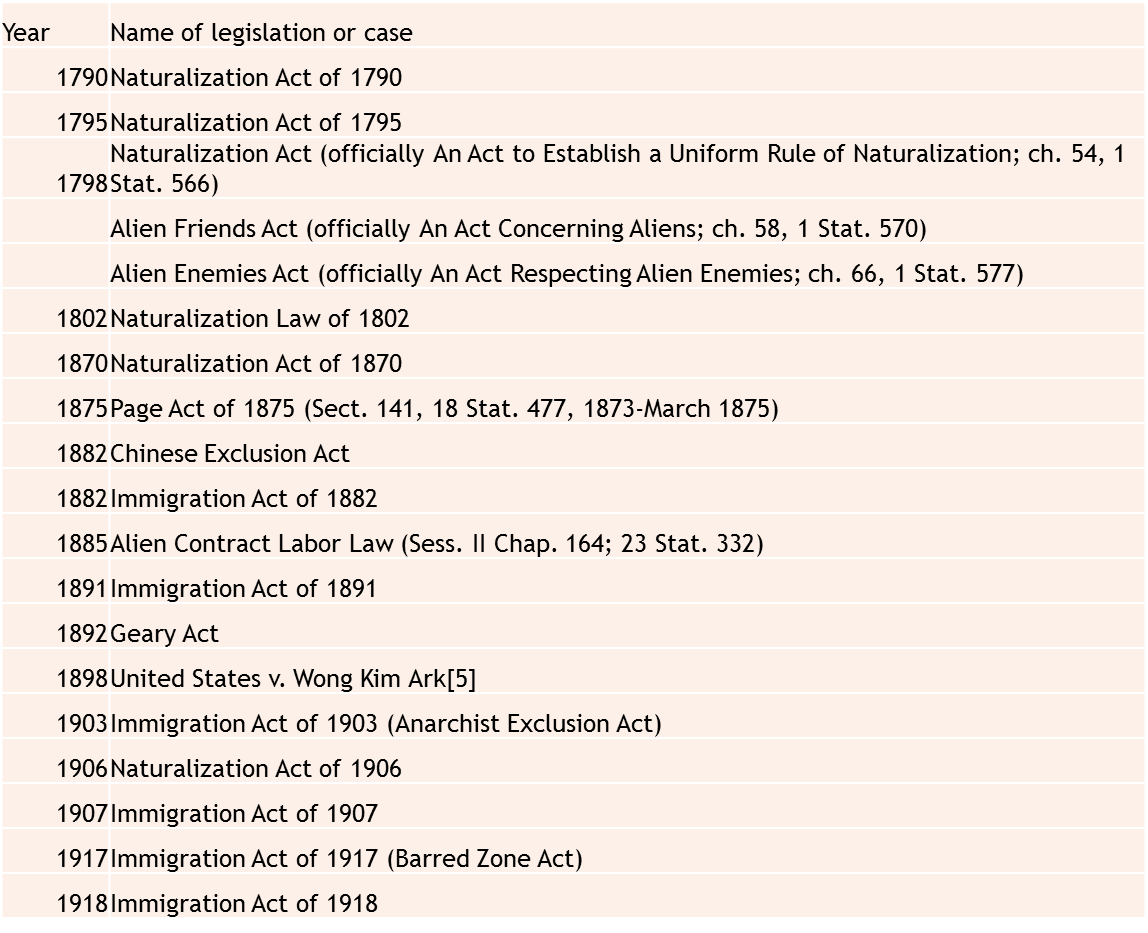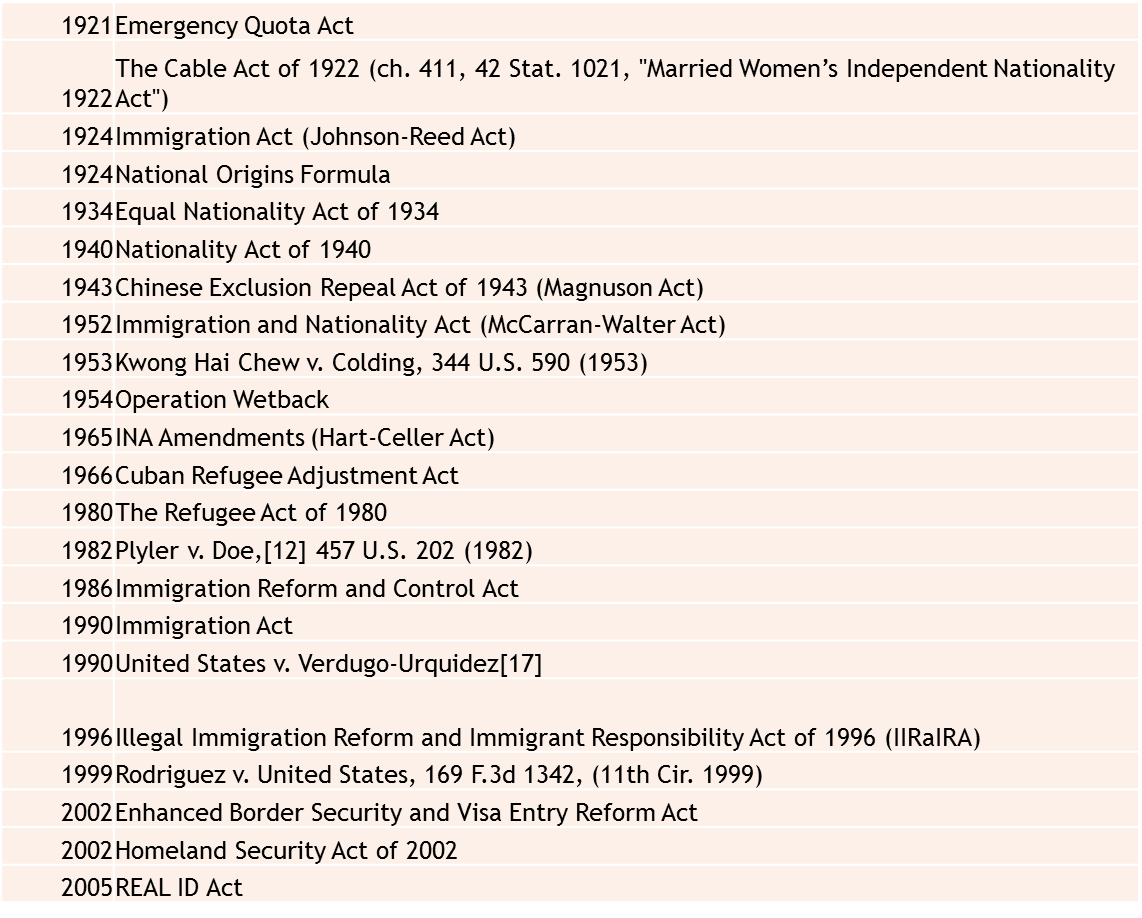Introduction
Immigration has been a key component of the American history. However, the issue of immigration has recently turned out to be very much controversial in the United States. On one side, proponents for immigration argue that the immigrants have helped the country to develop. On the other hand, those against the policy feel that immigrants are taking away the resources of the country with no much benefit. This paper is focused on both sides of the argument.
Who are Immigrants?
People who live in a country where they were not born are referred to as immigrants. In the US they include people residing in the country who were not U.S. citizens at birth. Immigrants also include lawful permanent residents (LPRs), naturalized citizens, certain legal non-immigrants (e.g., persons on student or work visas), those admitted under refugee or asylum status, and people illegally living in the country.
History of Immigration into the US
The United States has been a centre of attraction and admiration for many people across the different parts of the globe. The country is considered an epitome of success and most people desire to live in the US to have a feel of how life is from the inside. Immigrants started to enter the country from the 1820s. Since then millions of people have moved into the country. Majority of people out of the country consider the US a land of honey and joy. The country is characterized by better healthcare systems, low levels of poverty, political stability, better education system, prime investment opportunities. The US also has many job opportunities, there is a just and functioning legal system. Other people move into the country to due to love reasons to stay with loved ones, and to escape oppression back at home to seek asylum in the country.
Historical Source of Immigrants
The regions of origin for immigrant populations residing in the U.S. have dramatically shifted since the passage of the 1965 Immigration and Naturalization Act. In 1960, 84% of immigrants living in the U.S. were born in Europe, Canada or other North American countries, while only 6% were from Mexico, 4% from Asia, 3% from the rest of Latin America and 3% from other areas. Immigrant origins now differ drastically, with European, Canadian and other North American immigrants making up only a small share of the foreign-born population (13%) in 2018. Asians (28%), Mexicans (25%) and other Latin Americans (25%) each make up about a quarter of the U.S. immigrant population, followed by 9% who were born in another region.
Legal Standing on Immigration in the US
The U.S. immigration law is complex, and can be confusing on how it works. The existing immigration policy is operated under The Immigration and Nationality Act (INA) that was enacted in1965. The INA allows the United States to grant up to 675,000 permanent immigrant visas each year across various visa categories. On top of those 675,000 visas, the INA sets no limit on the annual admission of U.S. citizens’ spouses, parents, and children under the age of 21. Moreover, each year the president is required to consult with Congress in determining the annual number of refugees to be admitted to the US through the U.S. Refugee Resettlement Process.
Once a person obtains an immigrant visa and comes to the United States, they come to be lawful permanent residents (LPRs). In some circumstances, non-citizens already inside the US may be granted a LPR status through a process known as “adjustment of status.” LPRs are allowed to work and live legally and permanently in the US. LPRs are eligible to apply for nearly all jobs (i.e., jobs not legitimately restricted to U.S. citizens) and can remain in the country permanently, even if they are unemployed. After residing in the US for five years (or three years in some circumstances), LPRs are eligible to apply for U.S. citizenship. It is difficult to apply for citizenship through the normal process without first becoming an LPR. Each year the United States also admits various non-citizens on a temporary basis. Such “non-immigrant” visas are granted to everyone from tourists to foreign students to temporary workers allowable to remain in the U.S. for years. While certain employment-based visas are subject to annual caps, other non-immigrant visas (including tourist and student visas) have no arithmetic limits and can be granted to anyone who meets the conditions for obtaining the visa.
Historical Evolution of Immigration Laws


The table shows the historical development of different laws enacted to regulate immigration laws in the US starting with the foremost law in 1970, The Naturalization Act.
Argument for Immigration
Immigrants contribute in many ways to the U.S. economy. They constitute over than a third of the total workforce in some industries. Their geographic mobility helps local economies counter worker shortages, smoothing out bumps that could otherwise wane the economy. Immigrant workers help support the aging native-born population, increasing the number of workers as compared to retirees and strengthening the Social Security and Medicare trust funds. And children born to immigrant families are upwardly mobile, promising future benefits not only to their families, but to the overall U.S. economy. For instance, in 2018, the labor force participation rate of foreign-born adults was 65.7 percent, higher than the 62.3 percent rate for the native born. Some 27.2 million foreign-born adults, 63.4 percent of all foreign-born adults, were employed that year, compared to 59.8 percent of native-born adults.
Immigrants hold jobs that are important to our economy and communities. Immigrant workers without a college degree are found throughout the economy, but make up a sizable share of the workers in certain industries. Firms in such industries will have a harder time hiring staff if these workers can no longer come to or stay in the United States.
Argument against Immigration
The most common argument against immigrants is that they take away jobs from American citizens and lower the wages. Even though immigrants may increase the relative wages for some Americans by a tiny amount, they cause a reduction by a larger amount for the Americans who directly compete against them. Moreover, immigrants coming into the US need government support before they settle and start working gainfully. The immigrants depend more on government support through programs such as Medicaid, food, housing, and prescription-drug subsidies. Such programs are supported through public funds, which can be used to better the life on native citizens.
Conclusion
Debate on the issue of immigration continues to attract diverse opinion. The US had attracted immigrants from all over the world. The immigrants cost the US substantial resources in supporting their stay in the country through different support programs. However, they play a major role in supporting the economy by providing labor as well as performing some critical role in balancing the economy.
Works Cited
Budiman, Abby, et al. “Facts on U.S. Immigrants, 2018.” Pew Research Center’s Hispanic Trends Project, 2020.
Cohn, D’Vera. “How U.S. Immigration Laws and Rules Have Changed through History.” Pew Research Center, 2017. Web.
Nowrasteh, Alex. “The 14 Most Common Arguments against Immigration and Why They’re Wrong.” Cato Institute, 2021.
Sherman, Arlock, et al. “Immigrants Contribute Greatly to U.S. Economy, Despite Administration’s “Public Charge” Rule Rationale”. CBBB, 2019.